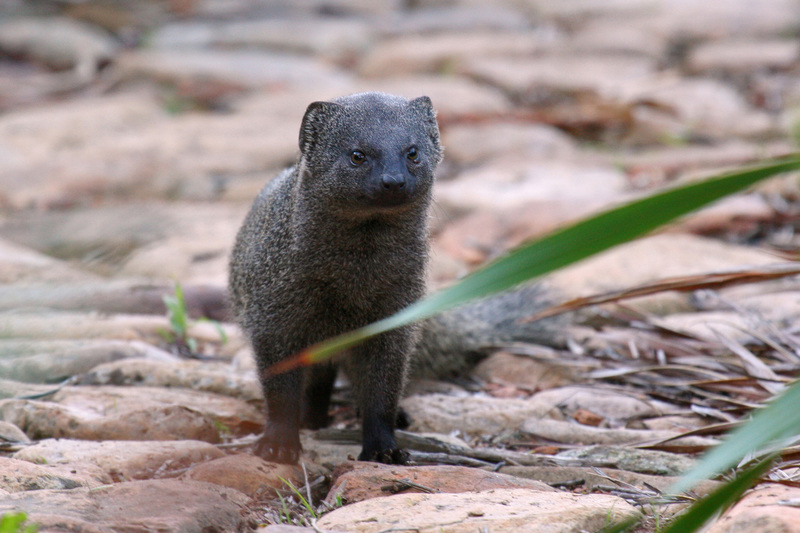Body scavengers and forensic science
15 November 2018 | Story Victoria Gibbon. Photo Wildlife Wanderer, Flickr. Read time 6 min.
When the police recover skeletonised, burnt or heavily decomposed bodies, they need forensic experts to make sense of what they’ve found. One important question in such cases is: when did the person die?
Forensic taphonomists study what happens to human remains after death. They try to provide answers by analysing the state of decomposition and the context in which the remains were found. By doing this, they can establish an approximate post-mortem interval – the time that’s passed since someone died.
This is important for several reasons. First, it reduces the potential pool of individuals the remains could belong to, which increases the chances of identification. Post-mortem interval can also be used to exclude possible perpetrators or to corroborate evidence in investigations.
Sometimes, there’s another reason that bodies are difficult to identify or aren’t found in one piece: they’ve been scavenged. The usual suspects that come to mind when talking about scavengers are hyenas, vultures, or jackals. But there are other animals you’d probably be surprised to find on the list: baboons, porcupines, badgers, racoons, opossums, and even deer.
For a long time we haven’t understood what effect this sort of scavenging and scattering has on the rate of decomposition. For instance, does it change the rate or pattern of decay?
We’ve been trying to fill this research gap at the University of Cape Town. We’ve researched decomposition since 2014, conducting a number of studies that focus on scavenging and scattering in a large swathe of vegetation in the heart of Cape Town.
The results have helped us to understand the role that scavenging plays in calculating post-mortem intervals. They’ve also already been applied to active forensic cases. This sort of cooperation between science and law enforcement can help to get accurate as well as just results.
Why scavenging matters
Our projects are conducted at the South African Medical Research Council’s secure research facility in Delft, Cape Town, within an area called the Cape Flats.
Human remains are often recovered from the particular kind of vegetation that grows in and around the facility, and which is common across the Cape Flats. That’s because the surrounding areas are so densely populated; the area’s struggle with crime and poverty is also well documented.
Existing methods of studying and measuring post-mortem interval in this vegetation have traditionally relied exclusively on the relationship between temperature and decomposition progression. The effect of scavenging is ignored. But, as our work has shown, it shouldn’t be.
For example, we have gained some invaluable insights from tracking the scavenging habits of the Cape grey mongoose. The knowledge we gained from a research project by an honours student was recently applied to a live police case – to astonishing effect.
Max Spies, an honours student, found that the Cape grey mongoose (Galerella pulverulenta) was the major and possibly only wild vertebrate scavenger of decomposing carcasses remaining in the environment. (Spies was supervised by myself and PhD candidate Devin Finaughty).
To test their scavenging habits, we set up an experiment using three small pig carcasses. One of these was completely caged to prevent scavenging; the other two were placed out in the open. We set up motion-activated infrared camera traps to catch scavengers in the act and to see how they behaved around the carcasses.
Spies visited the site every second day to track the direction and distance that bony elements were moved away from each original deposition site by the scavengers.
We found that the Cape grey mongoose’s daily scavenging activity had a significant effect. Carcasses the scavengers could access decomposed to skeletonisation within 14 days. But the carcass in the cage took more than 93 days.
We also discovered that mongoose target smaller, more manageable elements from larger carcasses and move them under cover to eat them.
The insight from this research opened the door for us to take part in an active police case which resulted in the recovery of a complete body in the area. We were called in to assist after a body was found.
Practical use
One of the first things we noticed was that the corpse’s hands were missing. Spoor and scat were found around the remains and along the undergrowth paths. These were positively identified by a South African National Parks tracker as belonging to a yellow mongoose (Cynictis penicillata) –- a species similar to the Cape grey mongoose.
The scat was analysed microscopically for its contents and clothing fibres matching those of the deceased were found.
A small tunnel under the bush was seen heading away from the body. After following the tunnel and removing the bushes to five metres from the body, most of the bones of each hand – along with the individual’s watch – were recovered at the entrance to an underground burrow.
Armed with these details, as well as our estimates of how long the corpse had been there, it was possible for the police to identify the person.
Based on the time the deceased went missing, the rapidity of skeletonisation was surprising. But it could be explained because of our knowledge about the way in which the local scavenger operated.
This knowledge, and our accumulated insights, could be crucial in evidence being gathered for other cases, including criminal investigations.![]()
Victoria Gibbon, Senior Lecturer in Biological Anthropology, Division of Clinical Anatomy and Biological Anthropology, University of Cape Town.










